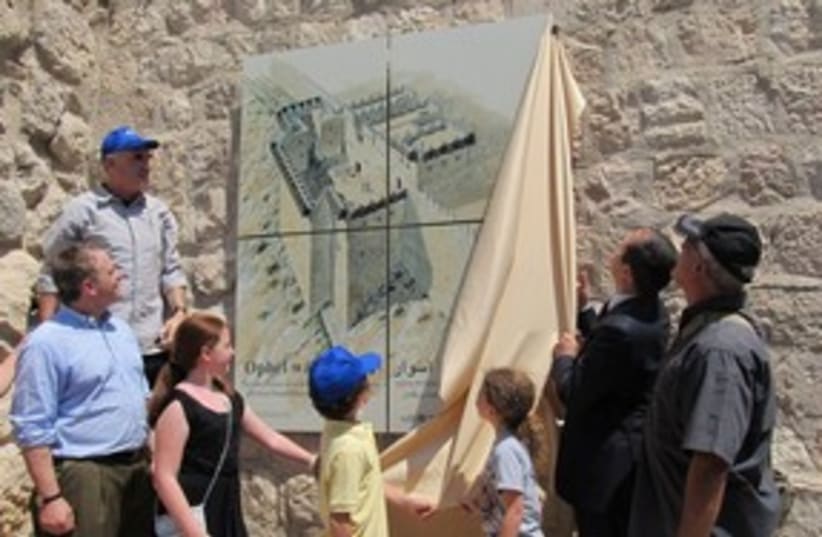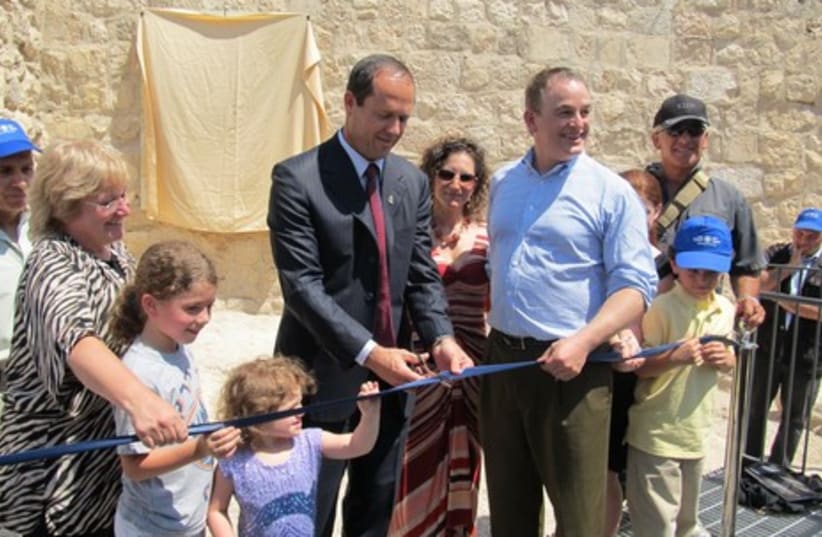
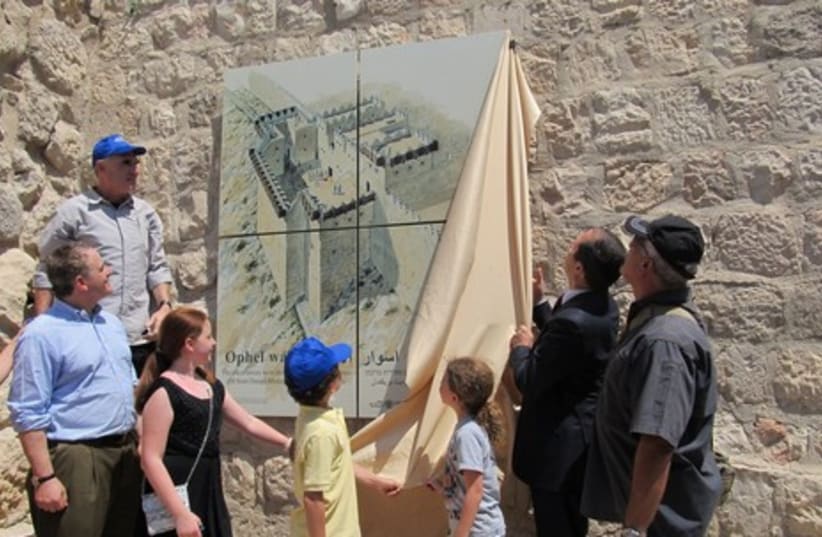
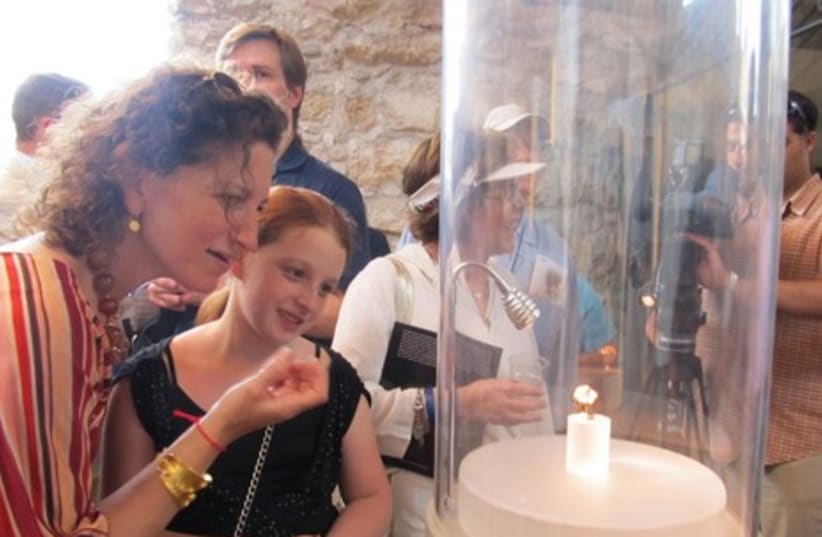
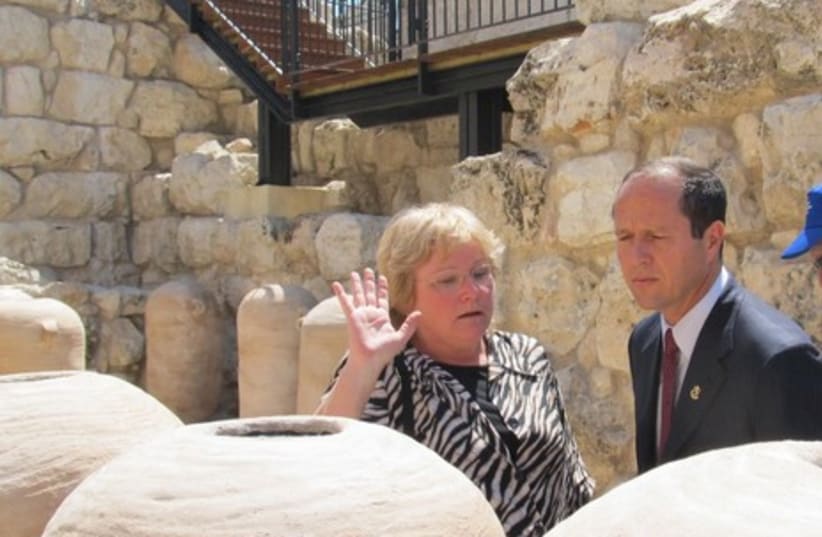
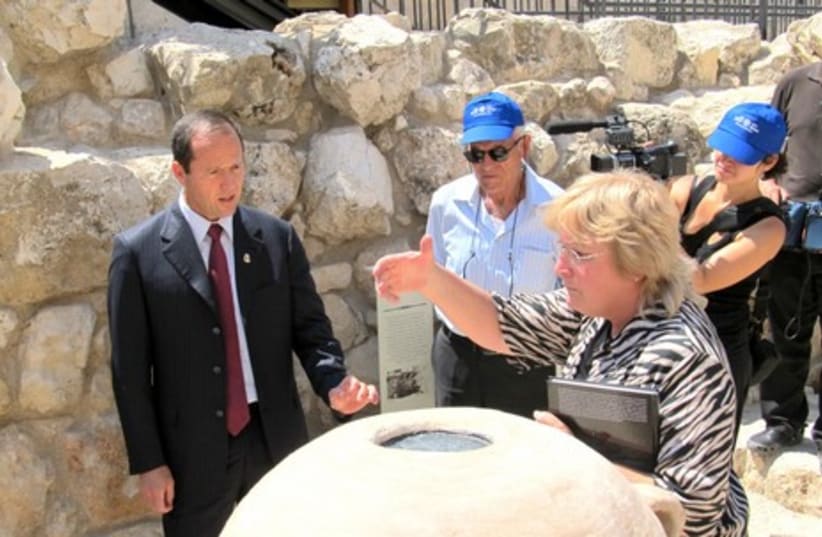

The site, which was uncovered by Hebrew University’s Dr. Eilat Mazar, contains mikvaot (ritual baths), store rooms, a watchtower, and royal buildings, where archeologists found dozens of large clay pots of various sizes.RELATED:City of David - Gone but not forgottenTemple Mount Faithful petitions for excavation reportMazar added that the ruins were well preserved, with some interior walls up to five meters high. She first became interested in the area while working with her grandfather, the late Dr. Benjamin Mazar, responsible for the archeological excavations of the Temple Mount following the Six Day War.“Our future lies in the fact that we can reconstruct our past,” said Jerusalem Mayor Nir Barkat, who attended the inauguration along with East Jerusalem Development Company director Gideon Shamir, representatives from the Antiquities Authority and the Nature and Parks Authority.“This site shows the world how the city looked so we can understand the layers of history,” said Barkat. “Part of our strategy is to respect the history of Jerusalem through its layers,” he said, adding that every effort would be made to “expose every piece of Jewish history.”The site will soon be opened to the public as part of the Davidson Center Archeological Garden, and may be part of a future “Promenade of Mikvaot.”Since all pilgrims to the Temple Mount had to purify themselves before entering, the area is dotted with dozens of ritual baths both large and small.Avi Mashiah, a conservation expert with the Antiquities Authority who oversaw the conservation efforts of the Ophel City Wall Site, added that some of the pots and stones were still blackened from the fires set in the destruction of the First Temple.The excavations allowed the archeologists to better understand the early construction methods on the steep hillsides of Jerusalem. The ingenuity of the construction is evidenced by the fact that the watchtower, which was discovered in the excavations, still provides the base for the major road that wraps around the Old City Walls opposite Silwan, Mashiah said.Mazar believes the area is described in the Torah in the verse about King Solomon's temple: “...and the temple servants living on Ophel repaired to a point opposite the Water Gate on the east and the projecting tower” (Nehemiah 3:26). It may have been called the Water Gate because of the plethora of mikvaot in the area.The excavation was financed by a gift from Daniel Mintz and Meredith Berkman. “The first time we were here with our kids six years ago, a friend introduced us to Dr. Mazar, who brought us here,” Meredith Berkman told The Jerusalem Post. “To my untrained eye, it looked like a pile of old stones and garbage, but she [Mazar] said, ‘I believe this is the remnants of the walls built by King Solomon.’ I was aghast that it was in such poor condition,” Berkman said.Mazar and the Antiquities Authority have been working for two years, since they received the final approval from the city and relevant historical groups, on excavations and preservation.Also on Tuesday, a fragment of the earliest written document ever discovered in Jerusalem was unveiled. The two-centimeter fragment was discovered by Mazar’s team in the area, and dates from the late Bronze Age. Experts believe that the fragment, written in Akkadian cuneiform script, seems to be a copy of a letter sent from the city to an Egyptian King, when the city was still called Salem. The fragment was unveiled at its permanent exhibit in the Davidson Center.“I want people to be impressed by the actual remains and the importance of the ancient history of Jerusalem,” said Mazar after the inauguration. “It showed the potential that ancient Jerusalem exists for us to reveal,” she said.“When it’s tangible, it makes it easy to understand,” Mazar added. “People believe what’s in these stories [in the Bible], but they don’t understand that they can see and touch this as well.”Archeologists with Emek Shaveh (Common Ground), a non-profit group of archeologists and community organizers, said that the site itself was less controversial than the nearby City of David Archeological Park, because it was not in the middle of a residential neighborhood, but they had issues with the presentation.
“We think it’s a political act using archeology to focus and show the Israeli and Judean heritage of the place and ignoring the richness of the site,” Emek Shaveh head Yonathan Mizrachi said. “It’s part of the big picture, the sites around it have been excavated already by archeologists in the ’60s and ’70s, and instead of showing multicultural aspects of the sites, and how each culture influenced and impacted Jerusalem, we’re again facing a situation that they have decided to focus mostly on the side of Israeli heritage.”